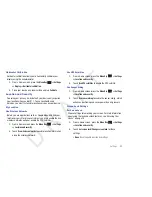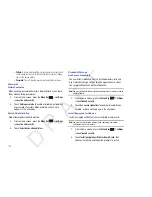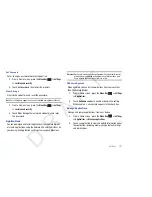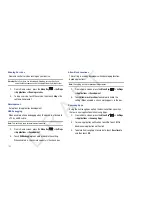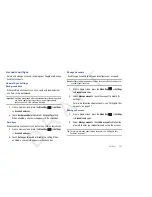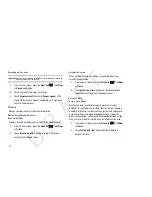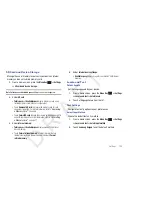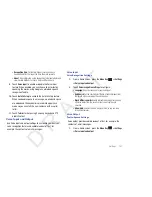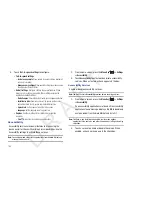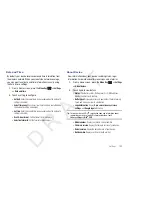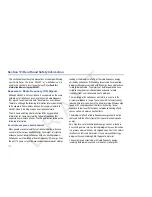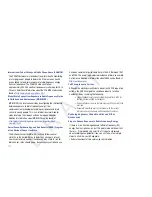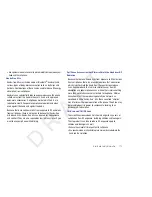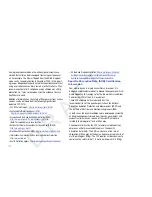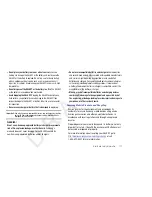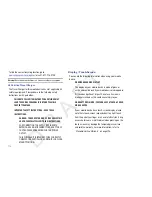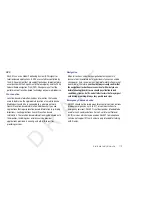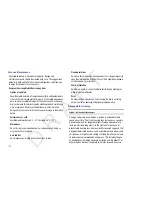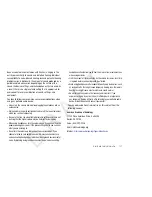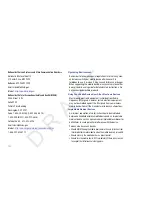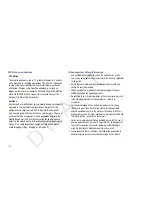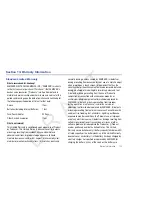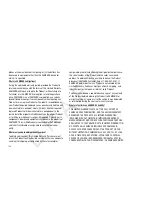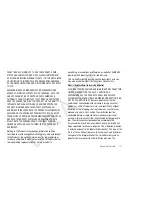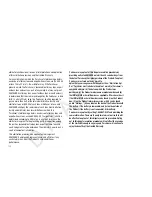
Health and Safety Information 113
•
Use speaker mode or a headset to place more distance between your
head and the cell phone.
Hands-Free Kits
Hands-free kits may include audio or Bluetooth
®
headsets and
various types of body-worn accessories such as belt-clips and
holsters. Combinations of these can be used to reduce RF energy
absorption from cell phones.
Headsets can substantially reduce exposure because the phone
is held away from the head in the user’s hand or in approved
body-worn accessories. Cell phones marketed in the U.S. are
required to meet RF exposure compliance requirements when
used against the head and against the body.
Because there are no known risks from exposure to RF emissions
from cell phones, there is no reason to believe that hands-free
kits reduce risks. Hands-free kits can be used for convenience
and comfort. They are also required by law in many states if you
want to use your phone while driving.
Cell Phone Accessories that Claim to Shield the Head from RF
Radiation
Because there are no known risks from exposure to RF emissions
from cell phones, there is no reason to believe that accessories
which claim to shield the head from those emissions reduce
risks. Some products that claim to shield the user from RF
absorption use special phone cases, while others involve nothing
more than a metallic accessory attached to the phone. Studies
have shown that these products generally do not work as
advertised. Unlike “hands-free” kits, these so-called “shields”
may interfere with proper operation of the phone. The phone may
be forced to boost its power to compensate, leading to an
increase in RF absorption.
Children and Cell Phones
The scientific evidence does not show a danger to any users of
cell phones from RF exposure, including children and teenagers.
The steps adults can take to reduce RF exposure apply to
children and teenagers as well.
•
Reduce the amount of time spent on the cell phone;
•
Use speaker mode or a headset to place more distance between the
head and the cell phone.
D R A F T

